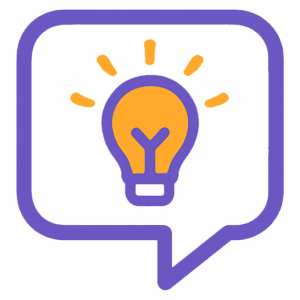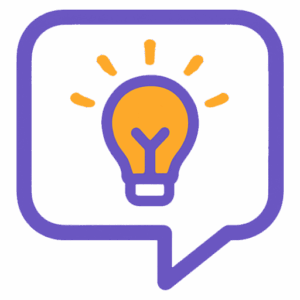Language learning is one of the most complex cognitive tasks humans can perform. It requires multiple areas of the brain to work together seamlessly, processing sounds, mapping meanings, forming grammar, and storing new knowledge for long-term use. Whether you’re picking up your first language as a child or learning a second or third as an adult, the brain undergoes fascinating changes at both structural and functional levels.
In this article, we’ll explore how the brain learns language, diving into the roles of specific brain regions, the differences between first and second language acquisition, the impact of age, and what neuroscience reveals about effective learning strategies.
The Brain Regions Behind Language
Language processing isn’t confined to one area—it’s distributed across multiple regions, each handling a different part of the puzzle.
1. Broca’s Area – Speech Production & Grammar
Located in the left frontal lobe, Broca’s area is essential for forming sentences and producing speech. It handles:
- Grammatical structuring – ensuring words are ordered correctly.
- Speech motor planning – controlling the muscles that form sounds.
- Syntax processing – understanding how words relate to each other.
Damage to Broca’s area leads to Broca’s aphasia, where comprehension remains mostly intact, but producing fluent speech becomes difficult.
2. Wernicke’s Area – Understanding Meaning
Situated in the left temporal lobe, Wernicke’s area focuses on comprehension:
- Recognizing spoken and written words
- Linking sounds to meanings
- Interpreting context in sentences
Injury here causes Wernicke’s aphasia, where people can speak fluently but produce nonsensical sentences without realizing it.
3. The Auditory Cortex – Processing Sounds
Found in the temporal lobe, the auditory cortex converts sound waves into meaningful signals. When you hear a new word, this is where:
- Sounds are analyzed into phonemes (basic sound units).
- Native vs. foreign sounds are distinguished.
- Patterns in pronunciation are stored for later retrieval.
4. The Angular & Supramarginal Gyri – Linking Modalities
These regions act like bridges, connecting sounds, meanings, and visual representations. They’re especially important when learning a language through reading and writing.
5. The Hippocampus – Memory Consolidation
The hippocampus is a key player in transforming short-term learning into long-term memory. When you practice vocabulary or grammar, this region works overtime to stabilize neural connections.
First vs. Second Language Acquisition
Your brain treats your first language (L1) and second language (L2) differently, especially depending on when you start learning.
First Language: Built-in Plasticity
Children acquire their first language effortlessly thanks to high neuroplasticity—the brain’s ability to form and reorganize connections.
- Infants are born with the ability to distinguish any human speech sound.
- By around 12 months, their auditory system tunes itself to the sounds of their native language, “discarding” unused phonetic contrasts.
- Grammar and syntax emerge naturally through exposure, without explicit teaching.
Second Language: Age Matters
Learning a second language later in life recruits different brain pathways:
- The critical period hypothesis suggests a window (roughly birth to puberty) where language learning is most efficient.
- After this period, the brain’s language areas are less plastic, so adults often rely more on explicit learning—memorizing rules rather than absorbing patterns naturally.
- Functional MRI studies show that late learners tend to activate broader, less specialized brain regions when processing their L2, making comprehension and fluency harder to achieve.
Still, adults have cognitive advantages:
- Better metalinguistic awareness—understanding how language works.
- Stronger memory strategies for vocabulary acquisition.
How the Brain Encodes New Words
When you learn a new word, your brain undergoes three steps:
1. Encoding
Your auditory cortex processes the sounds, while Wernicke’s area links them to meaning. If you also see the word written, the visual cortex and angular gyrus get involved.
2. Consolidation
The hippocampus strengthens connections between neural circuits, often during sleep. This is why sleep is essential for effective language learning.
3. Retrieval
Finally, stored representations are accessed by the prefrontal cortex, allowing you to produce or recognize the word when needed.
Bilingual Brains: Unique Neural Advantages
Research shows that being bilingual—or even actively learning a second language—physically reshapes the brain:
- Gray matter density increases in the left inferior parietal cortex, which manages attention and switching between languages.
- White matter integrity improves, especially in the corpus callosum, enhancing communication between brain hemispheres.
- Bilinguals often show delayed cognitive aging and lower risks of dementia due to constant neural flexibility.
Interestingly, the age of acquisition affects structure:
- Early bilinguals often process both languages in overlapping regions.
- Late bilinguals tend to develop partially separate neural networks.
The Role of Neuroplasticity
Language learning heavily depends on neuroplasticity—the brain’s ability to reorganize itself by forming new neural connections.
- In children, plasticity is naturally high, which is why they absorb languages faster.
- In adults, plasticity doesn’t disappear but requires deliberate stimulation. Repeated exposure, active recall, and immersion are critical to strengthening neural pathways.
- Novelty and emotional engagement boost learning—explaining why storytelling, songs, and real-life communication enhance retention.
Sleep, Memory & Language
Studies show that sleep plays a crucial role in consolidating language knowledge:
- During slow-wave sleep, the hippocampus “replays” recent learning, transferring it into long-term storage.
- REM sleep enhances procedural memory, supporting grammar acquisition and pronunciation.
- Napping after study sessions significantly improves retention, especially for vocabulary.
How Multisensory Learning Boosts Brain Activity
Engaging multiple senses accelerates neural encoding:
- Listening + reading + speaking activates more brain regions than passive exposure.
- Associating words with images or gestures creates richer memory traces.
- This is why language-learning platforms that integrate audio, visuals, and interaction tend to produce better long-term results.
Practical Insights from Neuroscience
Here’s how to leverage brain science for more effective language learning:
- Spaced repetition → Strengthens long-term memory via hippocampal consolidation.
- Active recall → Forcing the brain to retrieve information enhances retention.
- Interleaving skills → Mixing listening, speaking, reading, and writing builds stronger connections.
- Immersion → Increases activation of native-like pathways by maximizing real-life exposure.
- Sleep optimization → Studying before sleep boosts vocabulary retention.
References
- Friederici, A. D. (2011). The brain basis of language processing: From structure to function. Physiological Reviews, 91(4), 1357–1392.
- Pulvermüller, F., & Fadiga, L. (2010). Active perception: Sensorimotor circuits as a cortical basis for language. Nature Reviews Neuroscience, 11(5), 351–360.
- Abutalebi, J., & Green, D. W. (2016). Neuroimaging of language control in bilinguals: Neural adaptation and reserve. Bilingualism: Language and Cognition, 19(4), 689–698.
- Kuhl, P. K. (2010). Brain mechanisms in early language acquisition. Neuron, 67(5), 713–727.
- Mårtensson, J., Eriksson, J., Bodammer, N. C., Lindgren, M., Johansson, M., Nyberg, L., & Lövdén, M. (2012). Growth of language-related brain areas after foreign language learning. NeuroImage, 63(1), 240–244.

